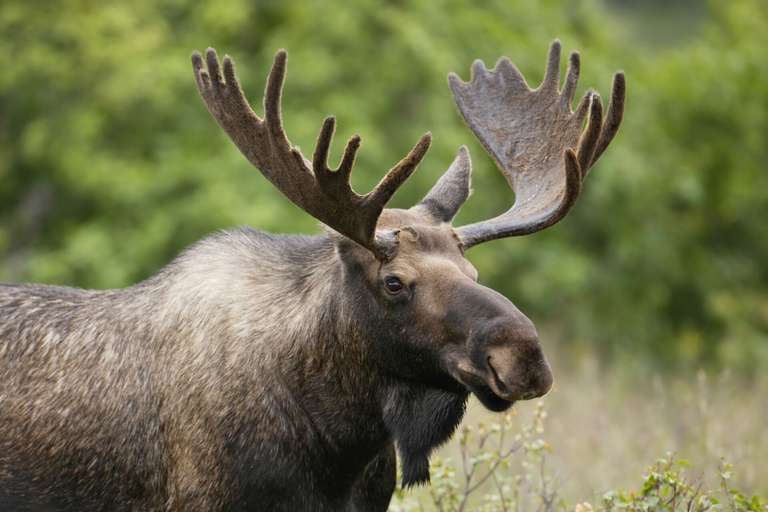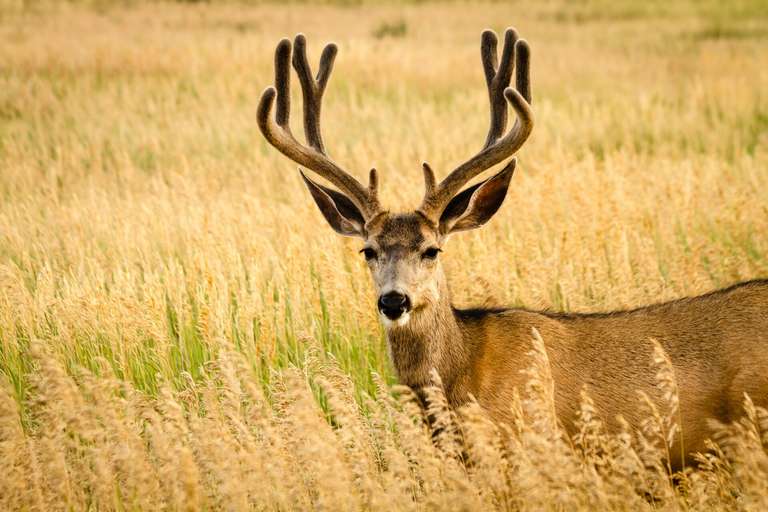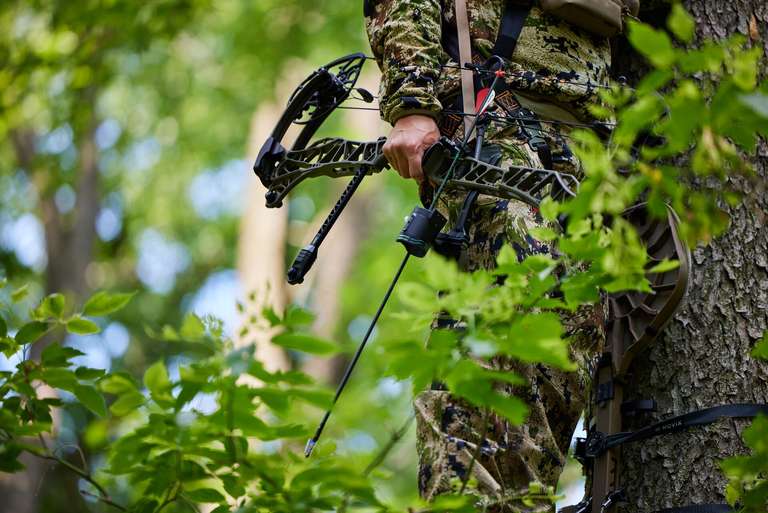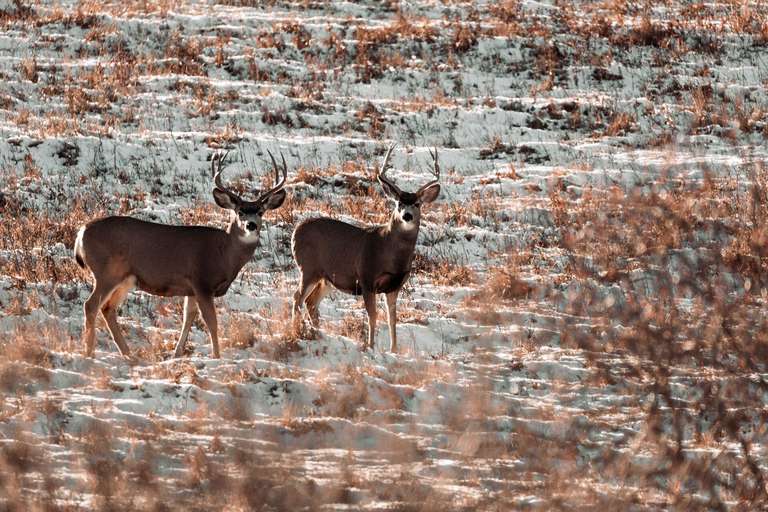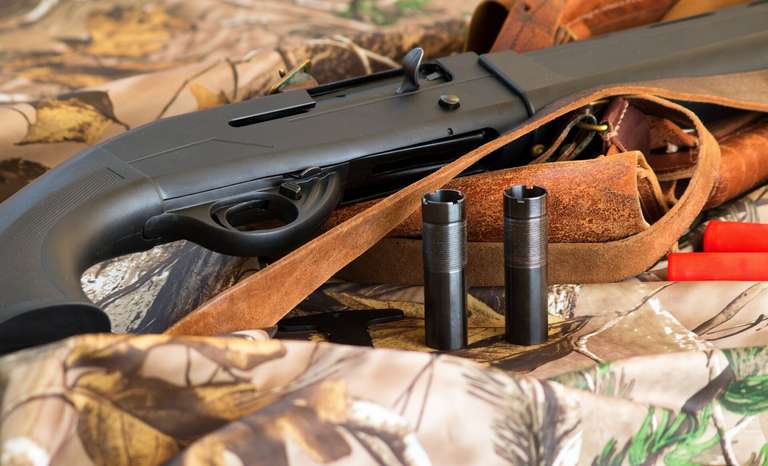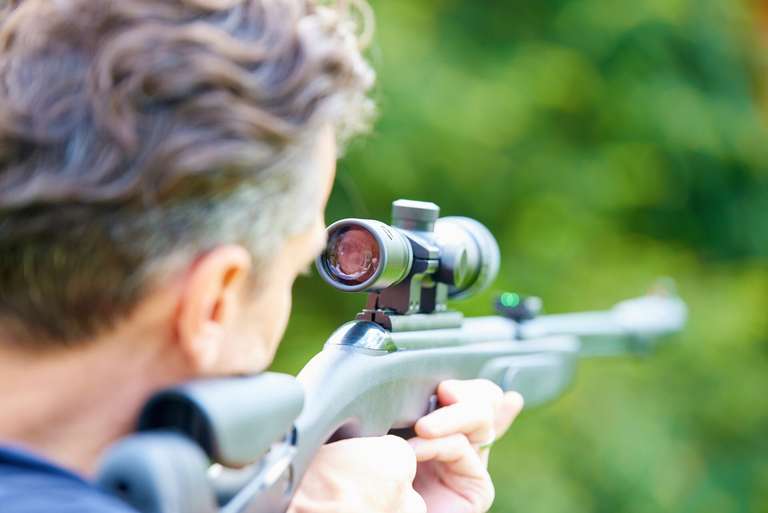Essential Hunting Gear: How to Choose What You Need
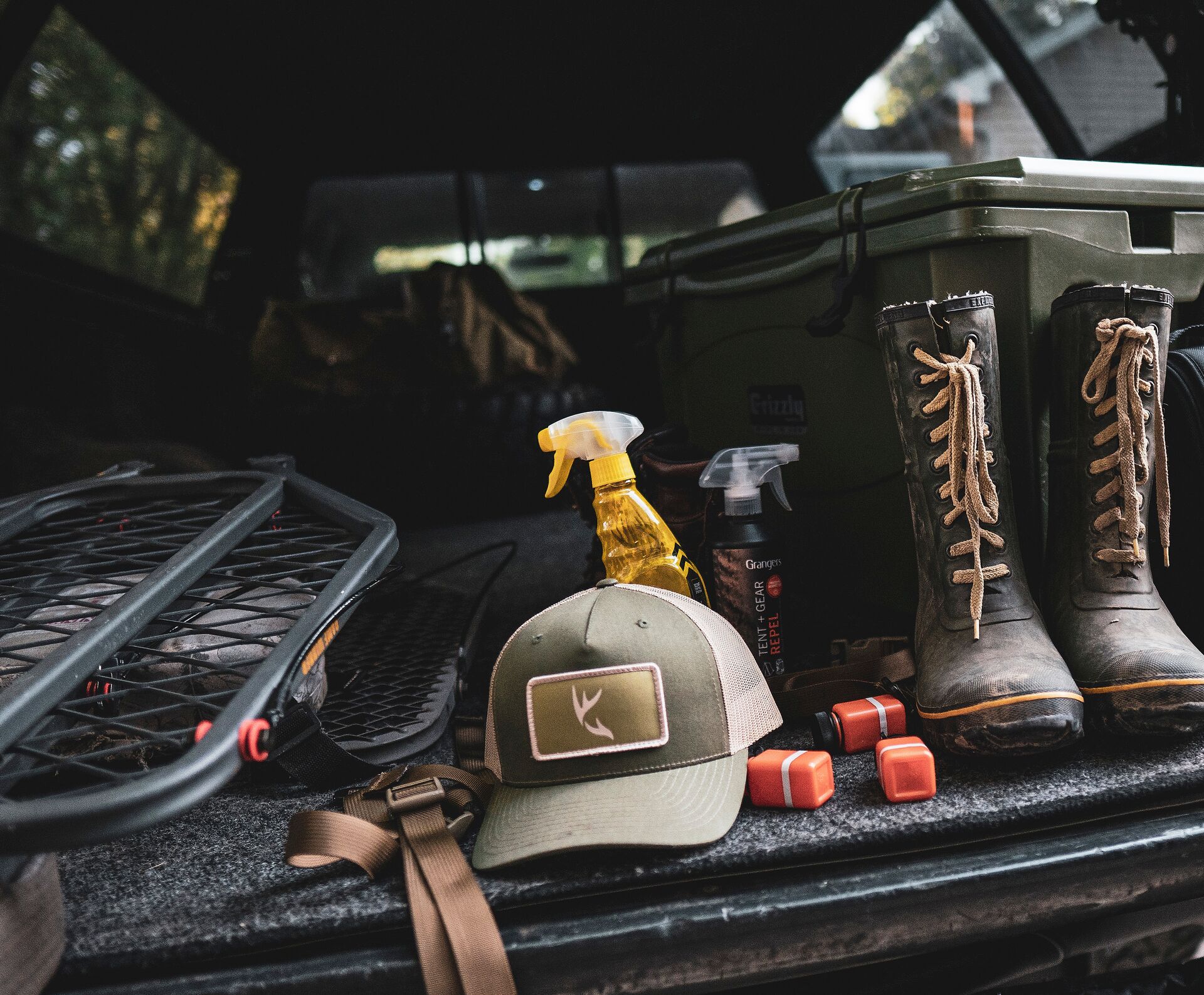
Gone are the days of your grandfather stepping into his favorite hunting woods in his blue jeans, work boots, and trusty flannel. Today's hunter has countless options for essential hunting gear.
As part of your ongoing hunter education, you'll need to be able to distinguish marketing hype from necessary equipment. After all, you want to invest your hard-earned dollars in items that enhance comfort, improve effectiveness, manage safety, and let you stay in the field on your terms.
What hunting gear do you need to get started as a new hunter? Keep reading for a list of crucial items, plus learn how to gear up depending on the species you hunt.
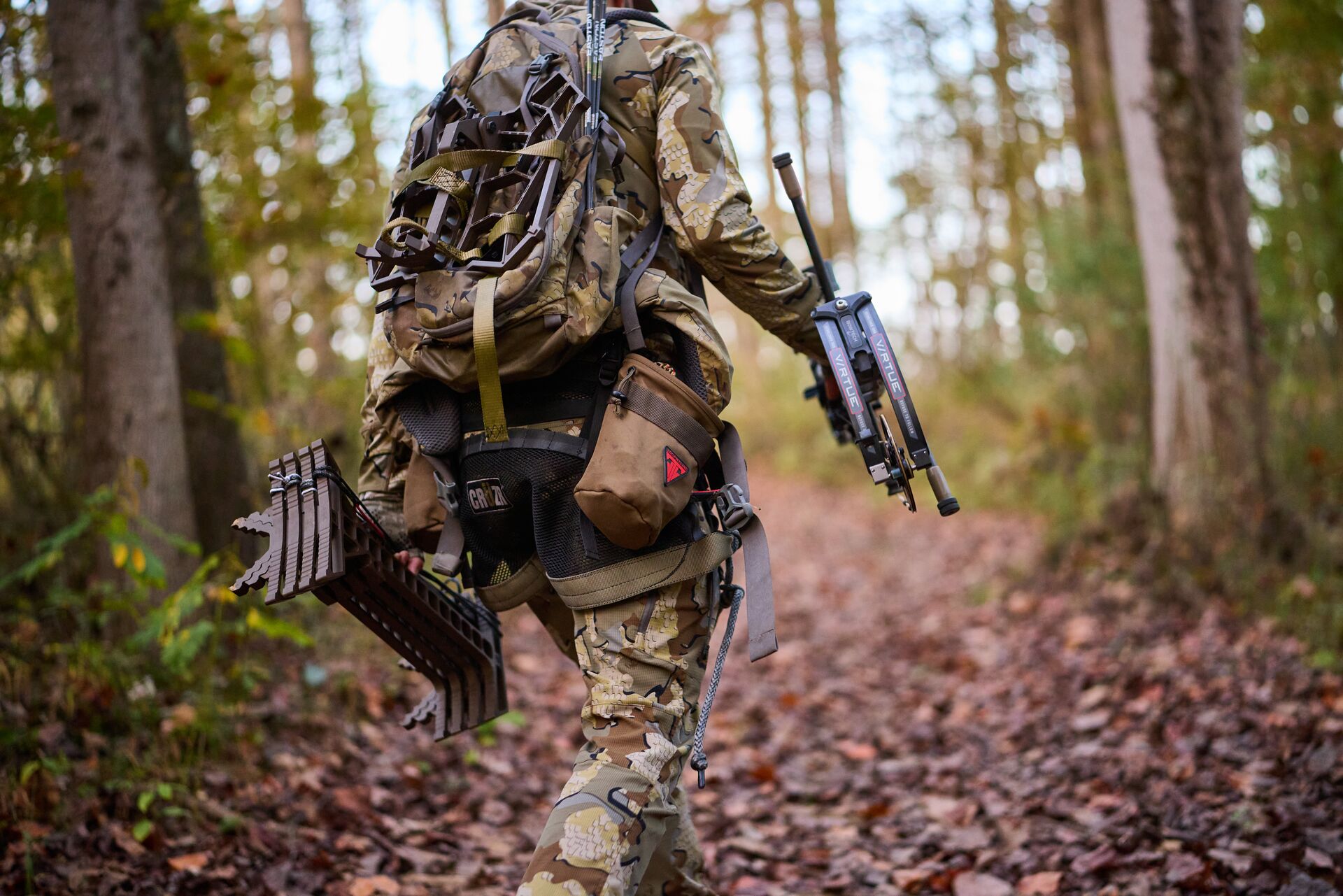
What Essential Hunting Gear Does Every Beginner Need?
Every hunting gear list should start with these 12 basic types of equipment to keep you safe, effective, comfortable, and legal in the field:
- A legal weapon for the species you're hunting, such as a rifle, shotgun, muzzleloader, pistol, crossbow, or bow
- Ammunition or arrows that meet your state's minimum requirements
- Blaze orange clothing so you can stay visible to other hunters
- Camouflage clothing that matches the terrain and breaks up your outline, allowing you to blend in seamlessly
- Clothing system of base layers, insulation, wind stoppers, and rain gear that will enable you to adjust for temperature and weather changes
- Comfortable boots suited to the weather and terrain
- Knife and/or a multi-tool for in-the-field game processing and general use
- First aid kit to carry in the field, with a more robust kit in your vehicle
- Backpack for storing clothing, food, water, and gear
- Binoculars and/or spotting scope for finding and identifying game at a distance
- Important documents, such as your hunting license, tags, hunter education card, and local hunting regulations
- A communications device, such as a mobile phone or a handheld satellite communicator
With these core items, you'll be well-prepared to navigate a wide range of hunting conditions and environments.
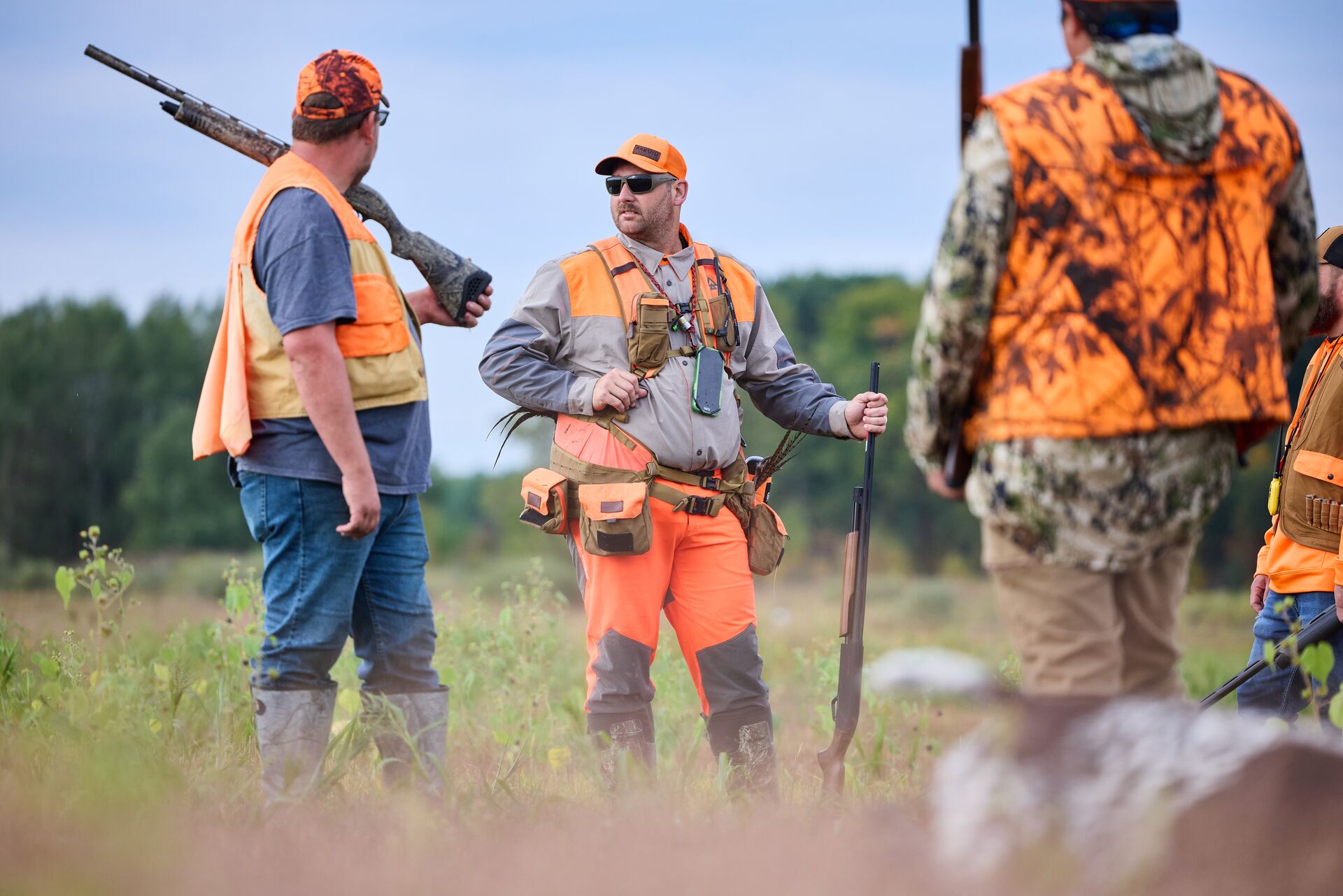
How Do I Choose the Right Gear for Different Terrain?
When choosing gear—especially the many types of camouflage clothing—consider the terrain where you'll be hunting. Each of the following areas requires different clothing and gear.
- Forests/Wooded Areas: Lightweight camo with greens and browns, quiet boots, and a tree stand or ground blind can help you blend into the environment.
- Open Fields/Grasslands: Choose clothing in lighter earth tones and invest in quality optics, shooting sticks, or a bipod for hunting in these expansive areas.
- Mountains/Alpine: Grays and darker earth tones work best in this terrain, and durable boots paired with a good pack and hydration system are essential for staying successful in the hunt.
- Wetlands/Swamps: Opt for lighter earth tones for wetlands and darker tones for swamps. Additionally, ensure you have waterproof boots or waders, as well as insect repellent and waterproof packs or dry bags to protect your gear.
- Snow/Cold Climates: Gray and white well-insulated outer clothing with moisture-wicking base layers is a must in these harsh conditions.
Making these strategic decisions can help you stay comfortable and camouflaged, even on the most challenging hunts.
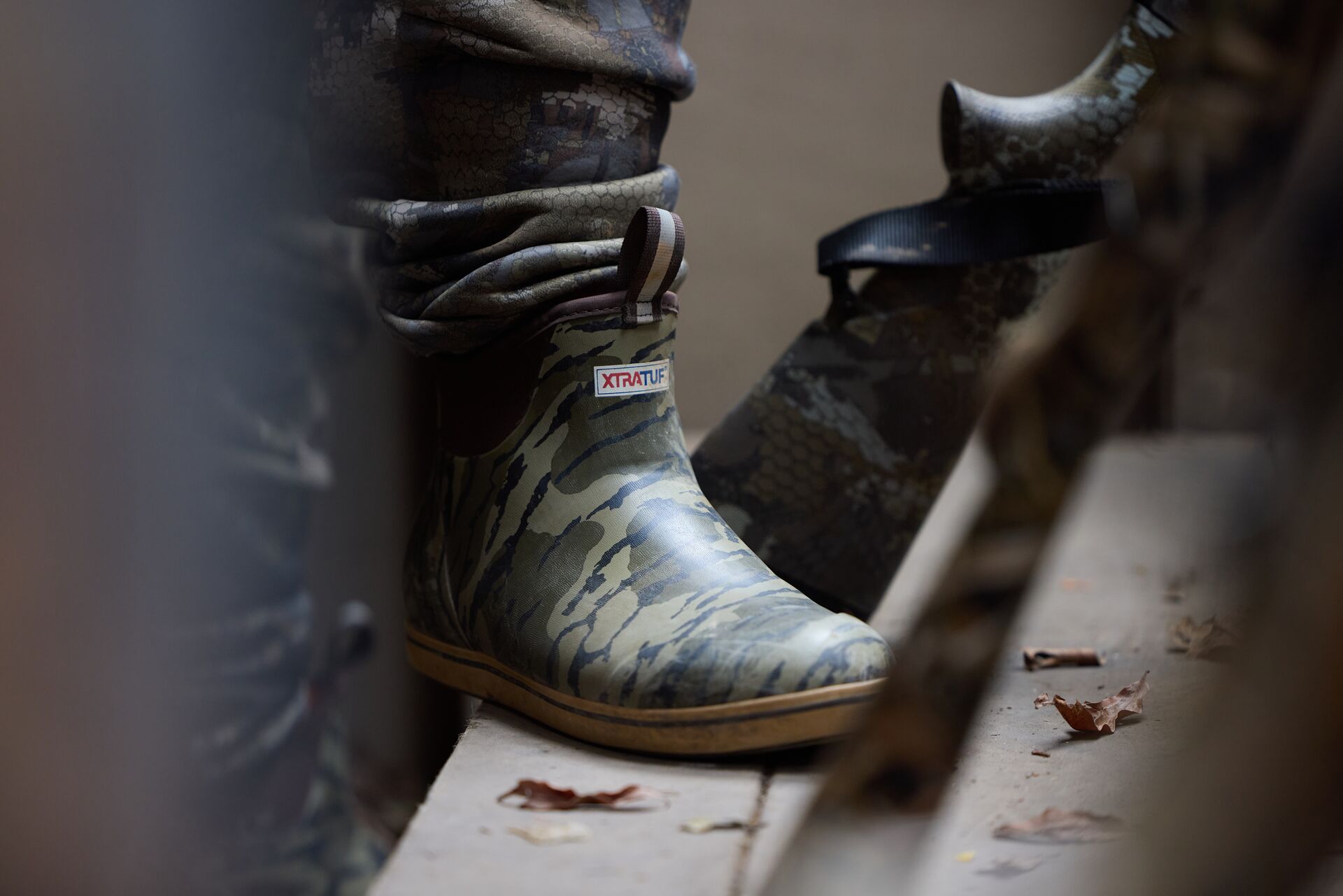
How Do I Choose the Right Gear for Different Species?
In addition to matching your equipment to the terrain, you'll need to select the best hunting gear for the species you're pursuing.
Deer
Each state has minimum requirements for caliber, arrow length, and broadhead specifications.
You can safely harvest most deer with a medium-caliber rifle (.243–.308 cal) or a bow of at least 40 lbs draw weight and a broadhead with a minimum cutting diameter of seven-eighths of an inch (7/8"). Scent control measures, binoculars, and a tree stand with FAS or a ground blind are also helpful.
Turkey
A 20- or 12-gauge shotgun with a turkey or full choke shooting #4 or #5 shot is a standard load out for these big birds. Dress in head-to-toe camouflage, including a face mask and gloves, to conceal yourself from the turkey's keen vision.
Use turkey calls and decoys for spring hunting to lure in lonely toms.
Waterfowl
Non-toxic waterfowl loads (bismuth, steel, or tungsten) are required when hunting waterfowl. Although you can use a 20-gauge shotgun, many people prefer a 12-gauge with #4 or #6 shot and full chokes.
Bring chest waders, waterproof and well-insulated camo, decoys, and species-specific calls. Bonus points if you have a retriever as your hunting partner.
Small Game (Rabbits, Squirrels, etc.)
To minimize meat damage, use a .22-caliber rifle or pistol or a .20-gauge shotgun. Smaller-bore shotguns, such as the .410, are also popular and increase the challenge of hitting a moving target.
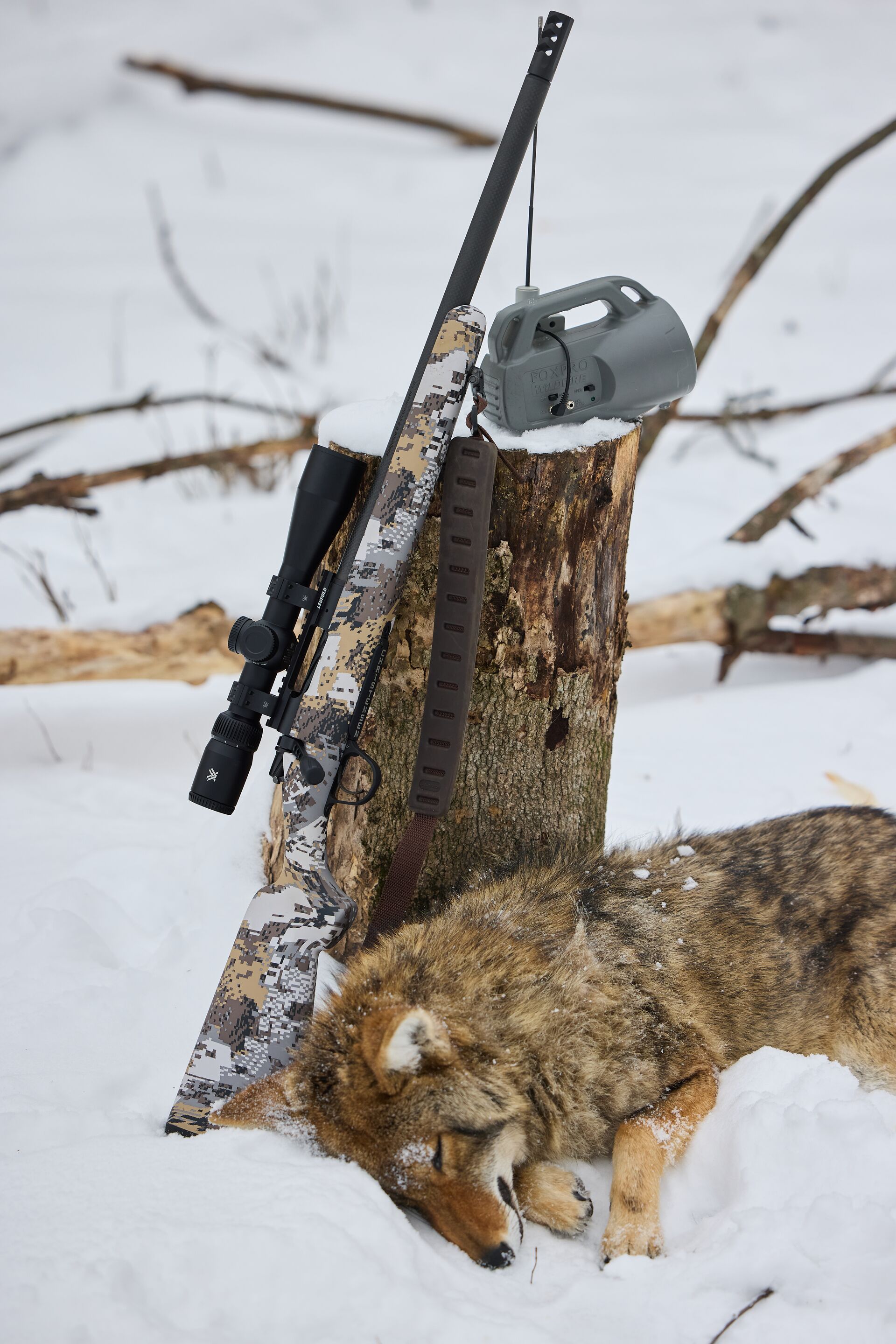
Wear a blaze orange vest to hold shells, water, snacks, and harvested game, and don't forget a pair of comfortable, lightweight boots.
Wild Boar
Although some hunters prefer to use a .223 caliber for boars and feral hogs, many choose a larger caliber, such as a .308. These animals tend to live in thick foliage, so wear long pants and sturdy boots to protect your legs and feet from scratches, ticks, and bites.
Consider using thermal optics for night hunts.
Predators (Coyotes, Bobcats, etc.)
Many predator hunters favor a medium-caliber rifle (.22 centerfire and up) with long-range optics. Calls and decoys are critical for bringing the predator within range.
You can also use thermal equipment for nighttime hunts, if it's legal in your state.
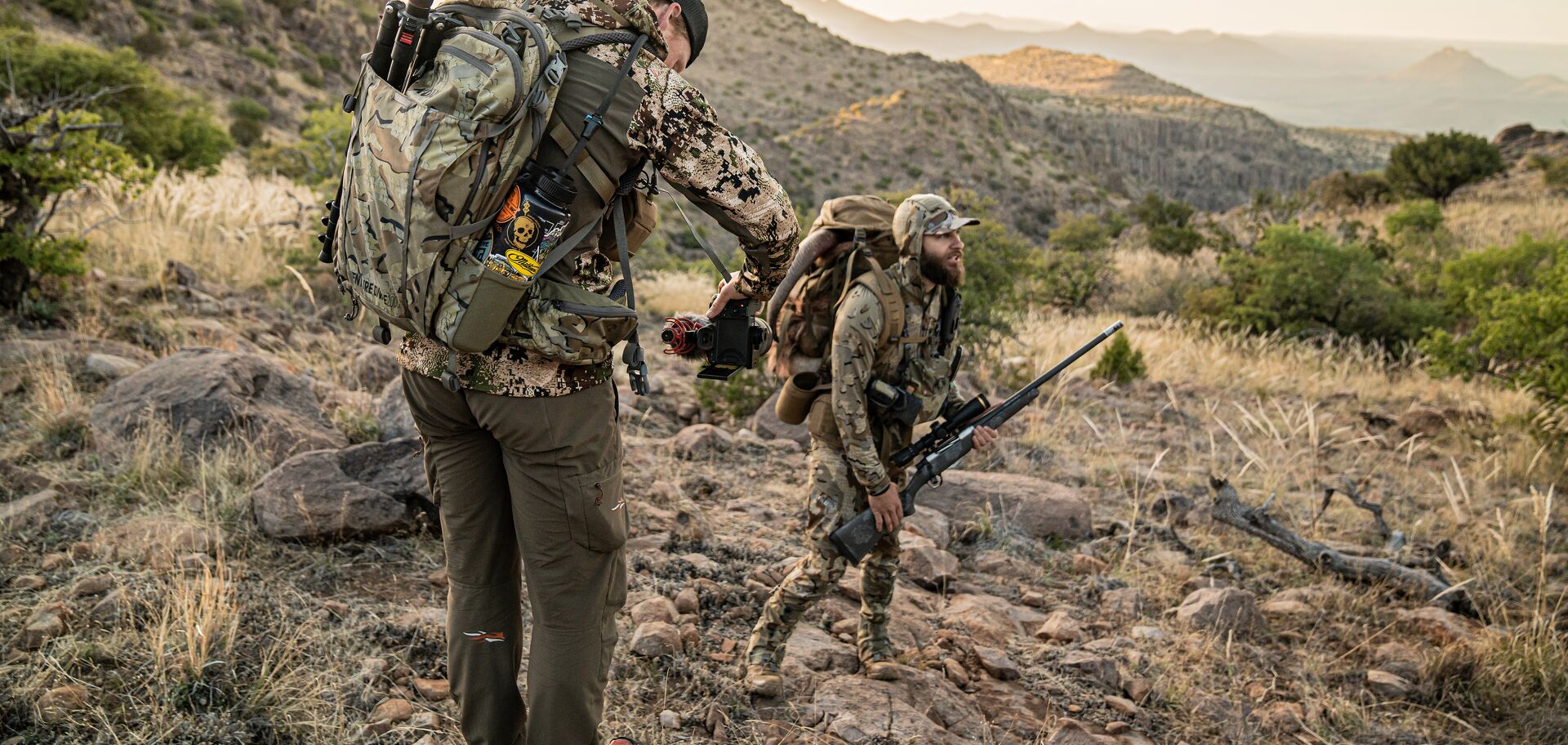
What Is Tactical Hunting Gear?
Inspired by recent military designs, tactical hunting gear that showcases durability and modular versatility has grown in popularity in the hunting community. While not mandatory for new hunters, this can be a tempting addition to your list of essential hunting gear.
Tactical hunting gear includes clothing with reinforced knees, seats, and elbows for use in rugged environments. These clothes also use more durable and lightweight synthetic fabrics with DWR (durable water repellent) properties.
Recent advances in lens quality, night-vision, and thermal scopes have trickled into the hunting market, and these low-light tools are gaining popularity among predator hunters.
Hunters are also increasingly using rangefinders for more precise shooting. Modern archers use these small handheld devices to dial in their sight pins accurately. Long-range rifle hunters pair rangefinders with ballistics calculators to adjust for elevation and windage on their scopes.
Multi-tools—which often feature pliers, drivers, and small blades—have been used to make emergency repairs to hunting equipment, build shelters, and even field-dress big game. Additional survival gear commonly used by the military—including paracord, handheld satellite communications devices, GPS navigation on watches and smartphones, and tourniquets—has proven lifesaving in unexpected situations.
MOLLE
Perhaps the most popular carryover from the military is Modular Lightweight Load-carrying Equipment (MOLLE). Featuring a grid of nylon webbing, MOLLE is commonly used on turkey vests, upland bird vests, waist packs, and backpacks to attach pouches that hold shells, first aid kits, water, food, and accessories.
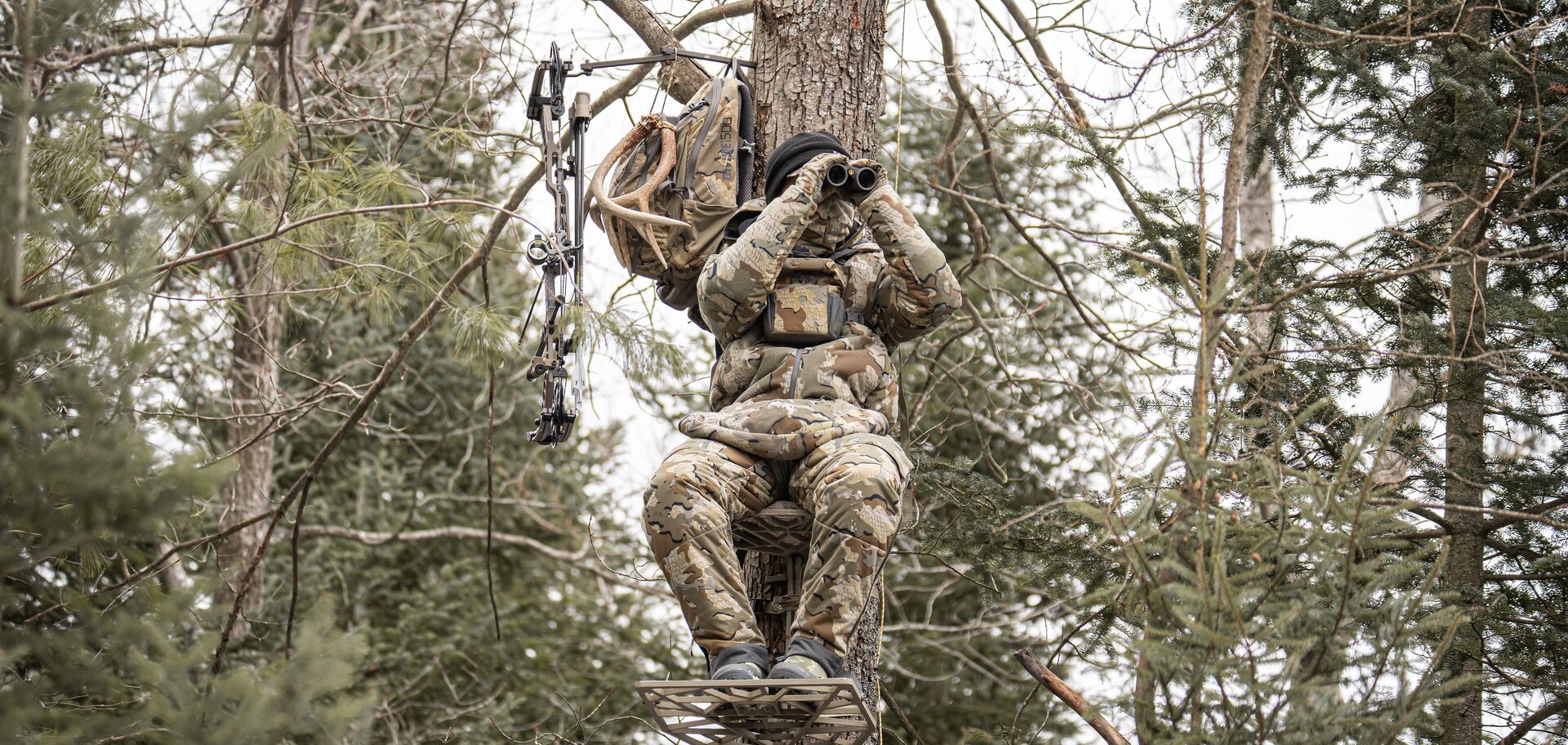
The Best Hunting Gear Set Includes a Hunter Safety Course
Creating the perfect hunting gear list starts with selecting essential gear that matches the terrain, game species, and weather conditions for your hunts.
Instead of succumbing to the temptation of the latest innovations in hunting gear, let your experience be your guide. Also, consider replacing or upgrading only the gear that solves a problem or limitation caused by your current equipment.
As you review gear options and prepare for your next hunt, make sure you've taken a hunter safety course. When you choose an online course through ilearntohunt, each state-certified course helps you gain a better understanding of animal behavior, fieldcraft, first aid, game processing, and even how to use your equipment safely and responsibly for a successful hunting experience.
Don't let hunting day arrive without having the hunter safety certification you need! Take the ilearntohunt hunter education course for your state so you're ready to hunt.
Frequently Asked Questions (FAQs)
We have answers to common questions about essential hunting gear!
Q: What hunting gear does every beginner need?
A: Beginners should start with essentials like a reliable rifle or bow, ammunition, a hunting knife, camouflage clothing, boots, a backpack, binoculars, and safety gear such as blaze orange and a first-aid kit.
Q: How do I choose the right gear for different terrain?
A: Match your gear to the environment. Lightweight, breathable clothing for warm, dry areas. Insulated, waterproof gear for cold or wet terrain. Choose sturdy boots with good traction for rocky or uneven ground.
Q: What are the most important pieces of hunting equipment?
A: The most critical items are your weapon, optics (scope or binoculars), clothing suited to the weather, and safety equipment. Navigation tools, like a GPS or map, and calls or scents for attracting game are also valuable.
Q: What hunting brands are best for new hunters?
A: Trusted beginner-friendly brands include Remington, Savage Arms, Leupold, Vortex, Under Armour Hunt, Sitka Gear, and Browning. These brands are all known for dependable quality and accessible pricing.
Take the ilearntohunt hunter education course for your state so you're ready to hunt.

